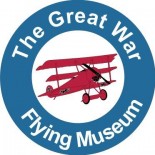| This single-seat Strutter was downed and captured by the Germans during the October 1916 raid on the Mauser Rifle Works at Oberndorn that Ray Collishaw participated in. The Sopwith 1½ Strutter was named that because of the short second set of struts attaching the upper wing to the fusilage. It was one of the most significant military planes of WWI. It was the first plane designed for a synchronized machine gun firing through the propellor and it was the first to equip a strategic bombing unit. It was quite advanced for the time having a variable incident tailplane and airbrakes on the lower wings. It was not a fast or manoueverable plane, but then again it was designed as a one or two-seat bomber, not a fighting scout. Many pilots thought that it was a good plane to fly. By 1917 it was the pre-emminent coastal patrol plane and night fighter. |
|


